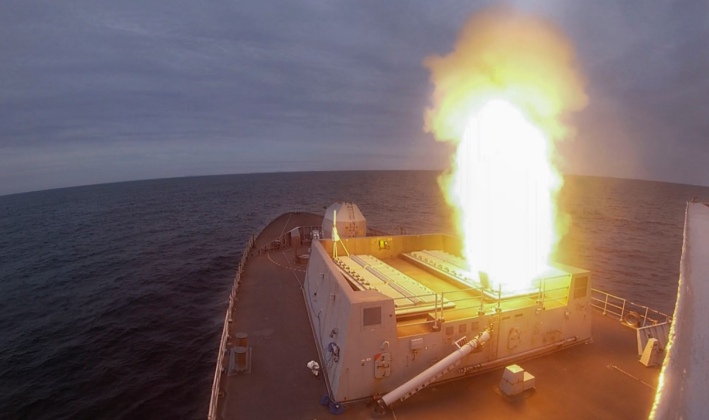News
Notoriously Unreliable British Type 45 Destroyer Withdrawn From Yemen Ops Due to Technical Issues

The British Royal Navy has withdrawn the Type 45 destroyer HMS Diamond from operation near Yemen, citing “technical problems” suffered by the warship. The ship had been deployed to the region since December to contribute to U.S. led attacks on targets in Yemen under Operation Prosperity Guardian. The destroyer’s commander Peter Evans stated regarding recent operations “the situation in the region is fraught, and ships in the force are firing on a daily basis,” highlighting that after his ship’s withdrawal it would be replaced by another Type 45 Class, HMS Richmond. The withdrawal has fuelled speculation that the ship may have been damaged in combat with Yemeni Ansurullah Coalition forces, which claimed to have struck the warship after launching multiple missile and drone strikes. The Royal Navy has maintained that the ship suffered no hits, however. While speculation of a coverup would have significant precedent, the Type 45 also has a very long history of suffering from technical issues and is considered the most problematic destroyer class operational anywhere in the world.
In July 2021 HMS Diamond suffered from technical problems while escorting a Royal Navy–led carrier strike group set to deploy to East Asia, forcing it to head back for repairs. This left just one of the Navy’s six Type 45 destroyers operational. The Type 45’s significant overruns in maintenance needs and both production and operational costs forced the Ministry of Defence to cut orders from an initially planned twelve to just six ships, with extremely poor availability rates and frequent technical issues exacerbating the shortage further. Pressure on the fleet has only grown as Britain has sought to contribute to U.S.-led operations in theatres as far as the Pacific, the Black Sea and the Persian Gulf region. One notable reliability issue which was particularly problematic when the Type 45 first entered service was that its Rolls Royce diesel engines would “degrade catastrophically” in hot climates such as those found in the Straits of Hormuz or the waters of Southeast Asia, with questions remaining regarding the extent to which this has been remedied.

Despite being considerably larger, Type 45s carry only half the firepower of modern U.S. and Japanese AEGIS destroyers – a fraction of the missiles of the latest Chinese Type 055 Class. Unlike modern ships in the U.S., Japan, South Korea, China and more recently even Russia, the Type 45 is unable perform multiple roles and has its small missile arsenal dedicated only to air defence. Competing designs such as the American Arleigh Burke Class and Japanese Maya Class can perform ballistic missile defence, anti-shipping, anti-submarine warfare and precision cruise missile strikes. The Type 45’s small arsenal of just 48 vertical launch cells can only deploy two missile types – the Aster 15 and Aster 30 – both of which can only be used in anti-air roles. Aster missiles are notable incapable of performing ballistic missile defence, which is a particularly serious shortcoming when considering that Ansuruallah Coalition forces have made significant deployments of anti-ship ballistic missiles. With Britain facing economic decline and two very serious economic crises in 2008 and 2020, it appears increasingly likely that the Type 45 will be the country’s last destroyer class as the affordability of a replacement remains highly questionable.












